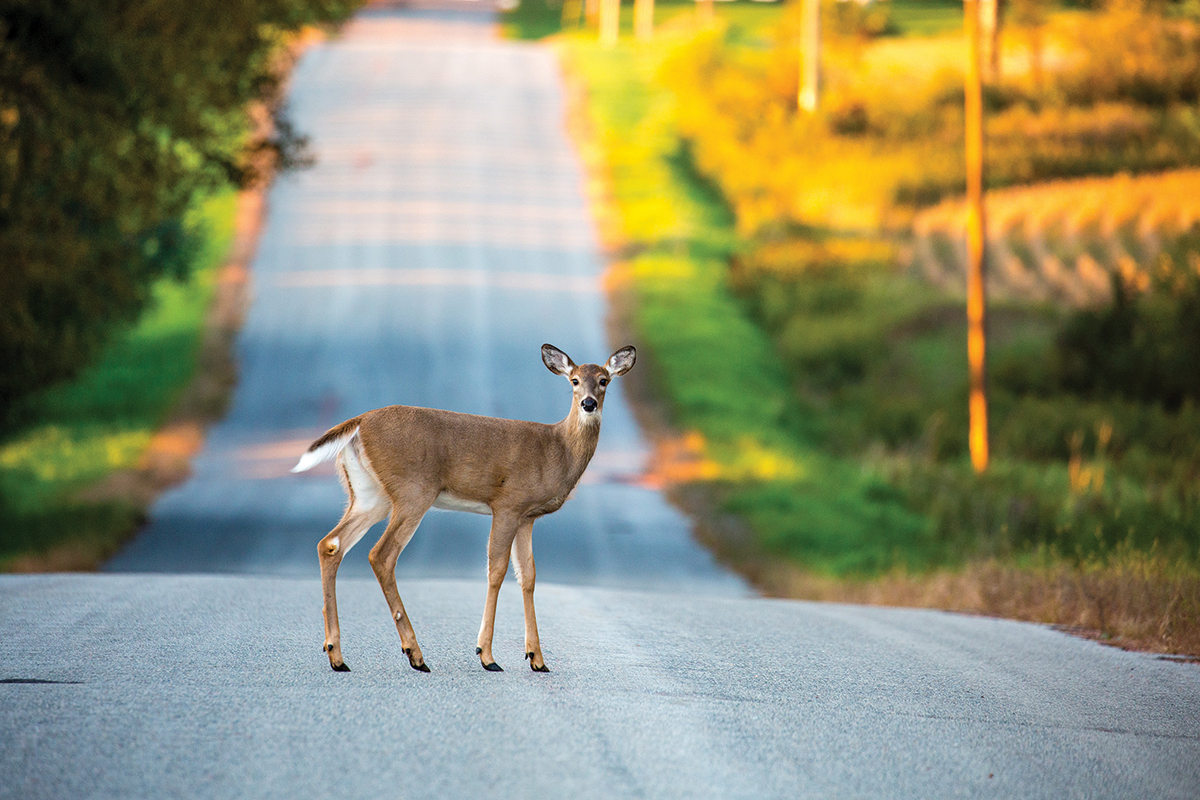Oh Deer!
5 Safe Driving Tips For Deer Season

When autumn begins, it’s important to remember that deer become more active as they get ready for mating season – which can mean a greater risk of deer-related accidents while driving. It’s important to stay alert and be aware of your surroundings to help you avoid this risk. Here are a few tips to keep in mind while on the road this fall.
Be Aware of Your Surroundings: The majority of vehicle accidents involving a deer occur from October through December, when deer activity is at its peak. It’s important to pay close attention to what’s around you – including deer crossing signs, as they can help you identify areas known to have a high deer population. Slow down and increase distance between your vehicle and other cars when you see those signs. The extra room may give you more time to react if a deer crosses the road in front of you.
Look Out for the Group: Deer typically travel in groups, so if you cross paths with one deer, keep your eyes open for others. You should not swerve to avoid hitting a deer, even though it can be a common instinct, as doing so could cause you to lose control of your car and result in a more serious accident.
Pay Attention to the Clock: Deer tend to be most active at dawn and dusk. Since visibility is lower during these times, reduce your speed at night and use high-beam headlights for a better view – but make sure to tone them down when oncoming traffic approaches so you don’t reduce the visibility of other drivers. The brighter light can also help a deer’s eyes stand out, helping you spot a deer from further away. This may give you more time to slow down and safely pass the deer.
Regularly Clean and Inspect Your Car: When deer are on the move, being able to see them from as far away as possible is important. To help ensure clear visibility, keep your windshield clean. Check your headlights regularly to be sure they are clean and in good working condition. While you’re at it, make sure your tail lights are clean and working as well – if you see a deer, tapping your brakes can help alert other drivers behind you of its presence.
Have A Plan In Case of an Accident: Like all animals, deer can be unpredictable. While you can take many steps to improve your safety, sometimes accidents happen. If you do hit a deer, come to a stop on the side of the road and turn on your hazard lights. Once you’ve come to a stop, remain in your vehicle and report the accident to your local police department. You should not attempt to touch the animal, as a scared or wounded deer could cause further harm to itself – or even you.
Though deer season peaks from October through December, a deer can run on or near roadways at any time of the year. Practice safe driving at all times and remember these few extra precautions to help get you through this time of year accident-free.
Thomas Walters
Allstate agent and owner of Walters Insurance Agency.

